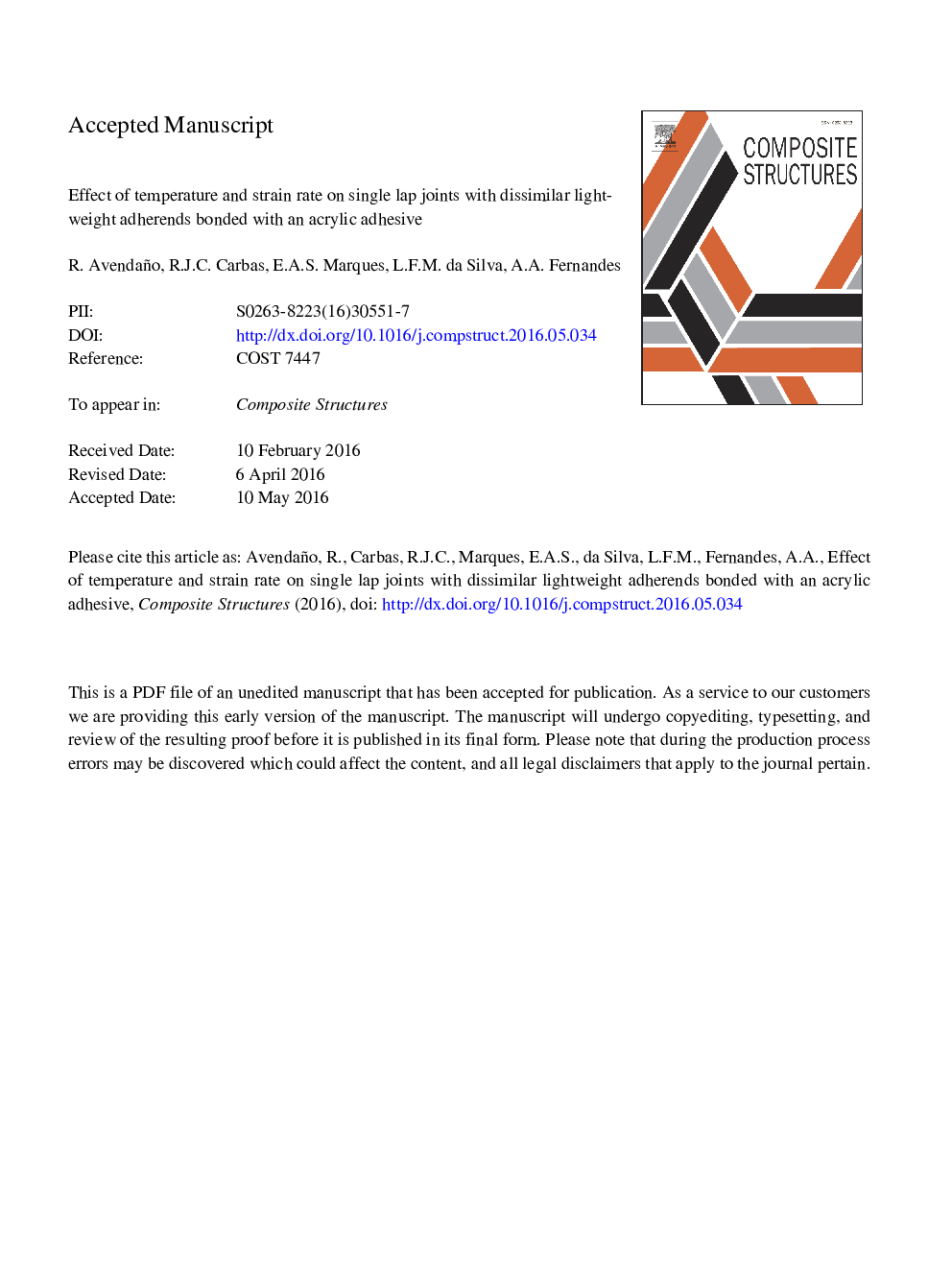| Article ID | Journal | Published Year | Pages | File Type |
|---|---|---|---|---|
| 6705212 | Composite Structures | 2016 | 31 Pages |
Abstract
The use of innovative lightweight materials for structural design in the automotive industry is no longer a novelty. When joining different parts made of these new materials it is clear that adhesives are one of the best solutions. However, the selection of a suitable adhesive for this application and the performance of the joint under real car conditions need to be intensively investigated. In this paper, an extremely ductile acrylic adhesive was selected to bond a commonly used unidirectional carbon fibre reinforced polymer with an environmentally friendly biopolymer in a single lap joint. The strength of the joint was characterised under quasi-static and impact loading at â30, +23 and +80 °C. It was found that the effect of the strain rate on the maximum failure load increased with temperature. A numerical study was also conducted to predict failure at room temperature. While the quasi-static model predicted accurately the joint behaviour, the impact model overestimated the joint strength as a consequence of the bad adhesion found experimentally.
Related Topics
Physical Sciences and Engineering
Engineering
Civil and Structural Engineering
Authors
R. Avendaño, R.J.C. Carbas, E.A.S. Marques, L.F.M. da Silva, A.A. Fernandes,
